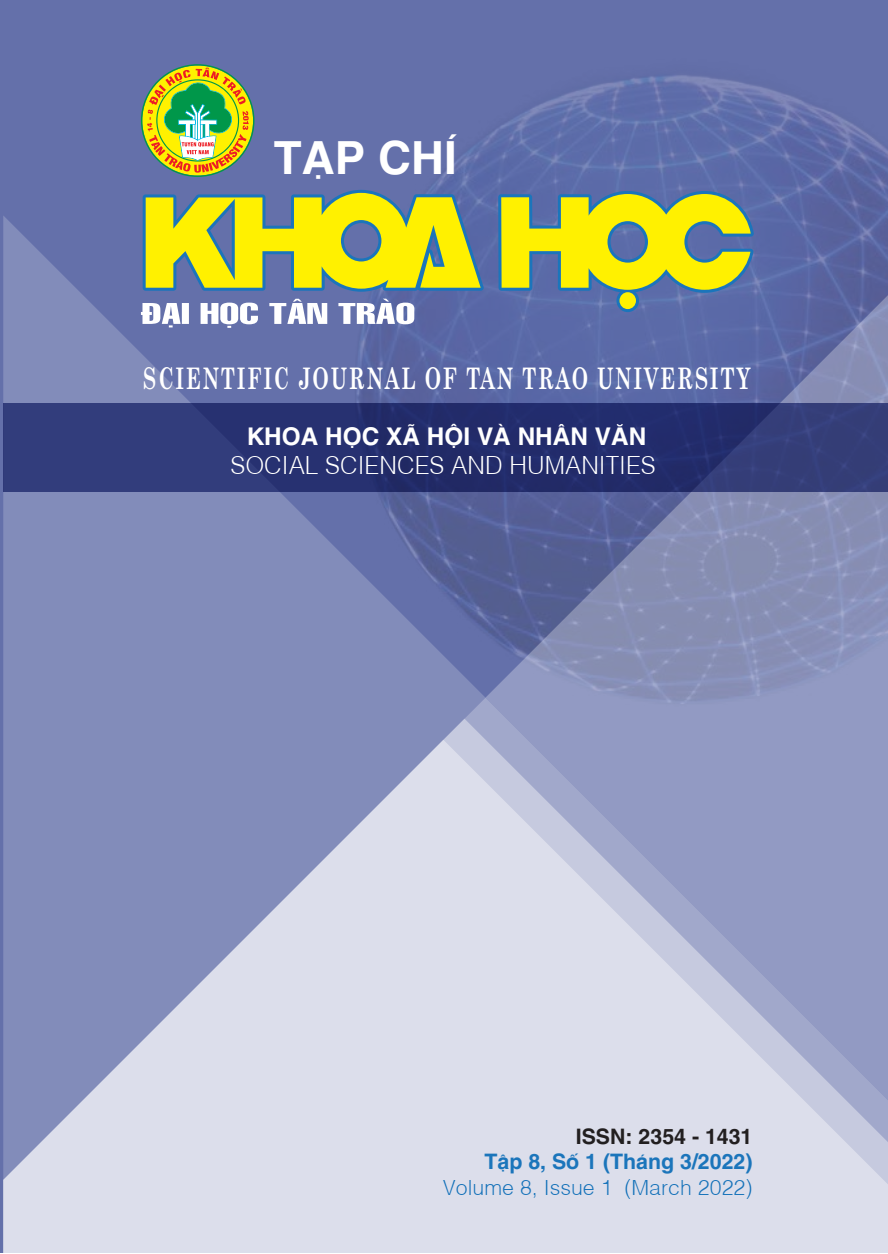FOLKLORE PAINTINGS IN SÌNH VILLAGE AND THANH TIEN PAPER FLOWERS - PROBLEMS WITH TOURISM DEVELOPMENT AND CULTURE CONSERVATION
DOI:
https://doi.org/10.51453/2354-1431/2022/714Keywords:
Thanh Tien paper flowers, Sinh village folk paintings, Featured art, Spiritual meaning, Regional cultureAbstract
Together with the development of society, the preservation of cultural- spiritual identities of some kind of tourism is the bridge to enhance the human spiritual values in daily life. Nowadays, the model of cultural - spiritual tourism has been popularized among national and international tourists for its historical, cultural- spiritual values embracing Vietnamese traditional culture as the connection between the past and the present- where unique and valuable artistic and cultural values are stored. In Thua Thien Hue- which used to be the center of Dang Trong and the capital of Nguyen Dynasty- still keep many distinct artistic and cultural values.
Phu Mau commune, Phu Vang district, Thua Thien Hue province is a positive potential place to form and develop this kind of tourism, where there are two traditional villages, the Sinh Village and Thanh Tien Paper Flowers village.
Downloads
References
[1] An,D.V. (2009), O Chau Can Luc, National Political Publishing House. Hanoi, page 94
[2] Duong, P.D. (2000), Vietnamese culture in the context of Southeast Asia, Social Science Publishing House. Hanoi
[3] Hai,P.T. (2013), History of Cochinchina in Vietnam in the 16th - 18th centuries from the perspective of the capital city - Hue cultural heritage research and preservation - Volume 3. Hue Monuments Conservation Center xb. Hue
[4] Thanh ,T.N.(1993), Vietnamese folk games and toys – A look – Finding the national identity of culture. T/c Research on Culture and Arts xb. Hanoi
[5] Trai,T.M (2010), Hue culture overview curriculum. Publishing House Hue University - Hue
Downloads
Published
How to Cite
Issue
Section
License

This work is licensed under a Creative Commons Attribution-ShareAlike 4.0 International License.
All articles published in SJTTU are licensed under a Creative Commons Attribution-ShareAlike 4.0 International (CC BY-SA) license. This means anyone is free to copy, transform, or redistribute articles for any lawful purpose in any medium, provided they give appropriate attribution to the original author(s) and SJTTU, link to the license, indicate if changes were made, and redistribute any derivative work under the same license.
Copyright on articles is retained by the respective author(s), without restrictions. A non-exclusive license is granted to SJTTU to publish the article and identify itself as its original publisher, along with the commercial right to include the article in a hardcopy issue for sale to libraries and individuals.
Although the conditions of the CC BY-SA license don't apply to authors (as the copyright holder of your article, you have no restrictions on your rights), by submitting to SJTTU, authors recognize the rights of readers, and must grant any third party the right to use their article to the extent provided by the license.


